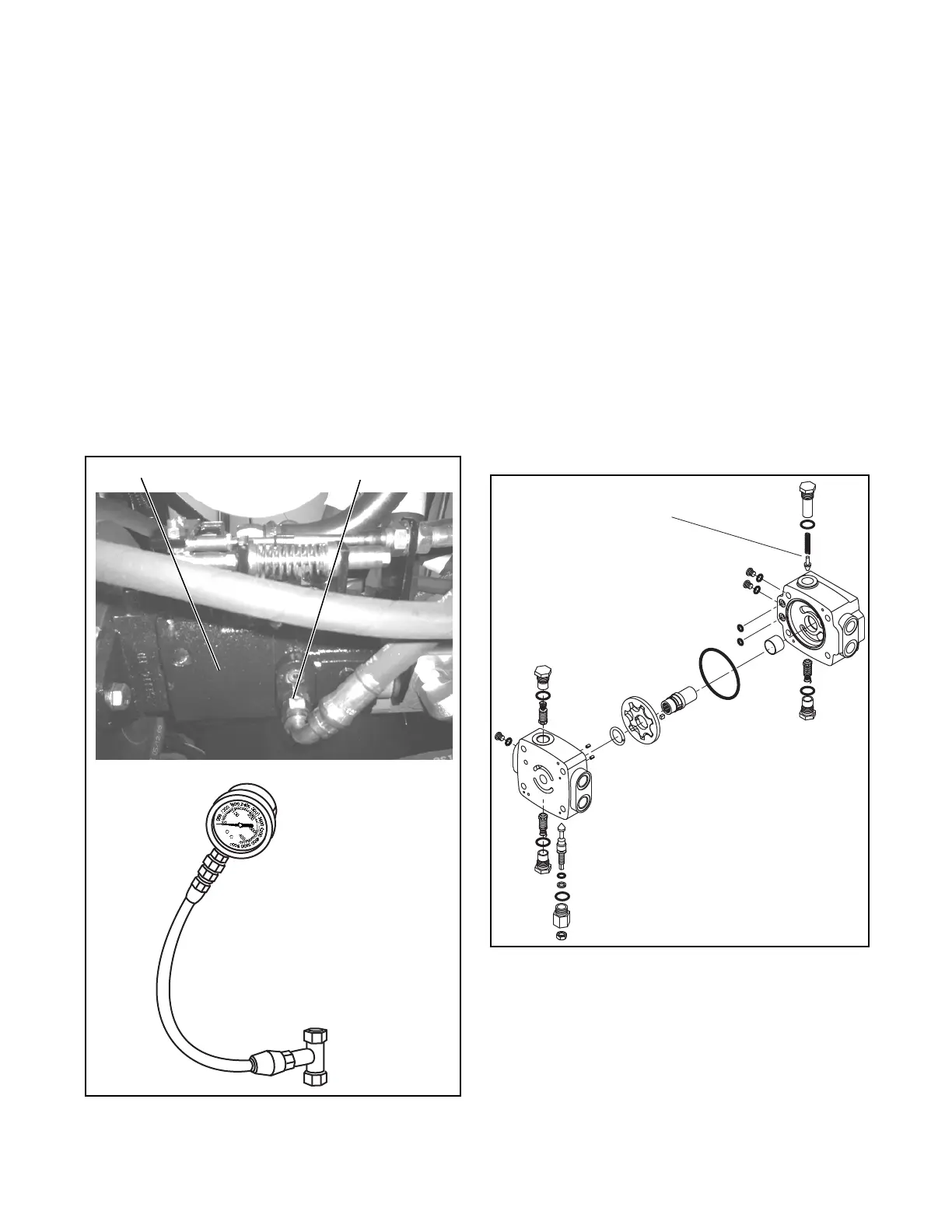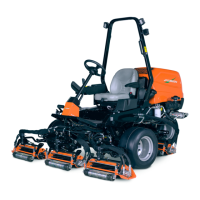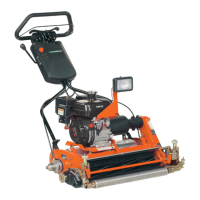HYDRAULICS
8M-58
PRESSURE TESTS
The pressure tests are frequently inconclusive in isolat-
ing a faulty component. A flow test is recommended for
isolating a problem within a circuit. The pressure tests
are useful in determining the pressure settings of pres-
sure relief valves.
Charge Pressure Test
1. Shut off the engine.
2. Remove the hose from the charge pump return
port on bottom of traction pump (Figure 8M-2).
3. Install a tee fitting in the charge pump return port.
4. Install a 200 psi (1379 kPa) gauge onto the tee fit-
ting.
Figure 8M-2. Pressure Gauge Connection
5. Set the parking brake, start the engine, and
advance the engine speed to the full throttle posi-
tion.
6. Record the pressure gauge reading. The charge
pressure should be 54 to 66 psi (372 to 455 kPa).
7. Shut off the engine and remove ignition key.
8. Remove gauge and tee fitting. Install the hose.
Conclusion
• If the charge pressure is within range, the charge
relief setting is correct.
• If the charge pressure is not within range, the
charge relief valve may need cleaning or
replacement (Figure 8M-3). The charge pump may
be at fault; perform Charge Pump Flow Test on
page 63.
Figure 8M-3. Charge Pressure Relief Valve
Tee
Fitting
0 to 500 psi
(0 to 3447 kPa)
Gauge
Traction Pump Charge Pump Return Port
Charge Pressure
Relief Valve

